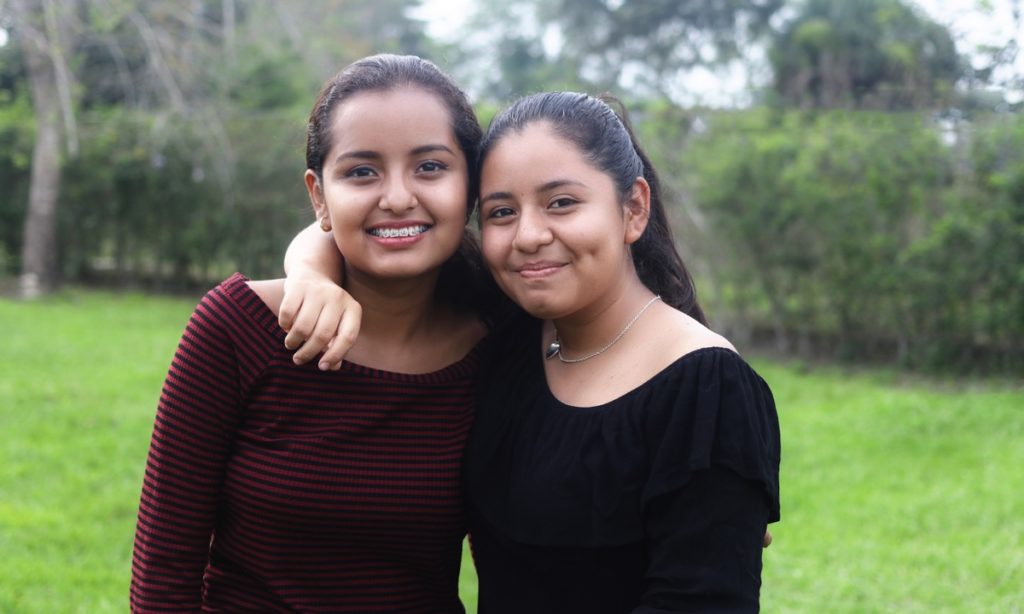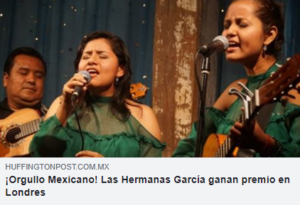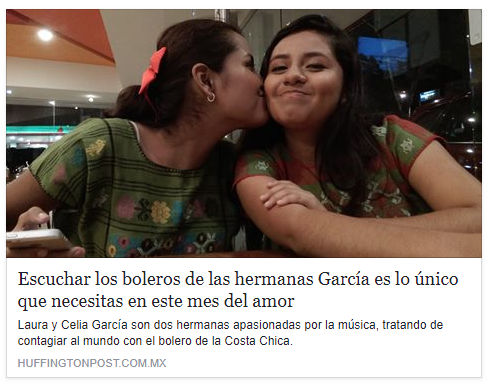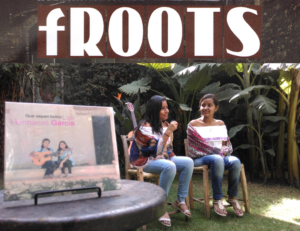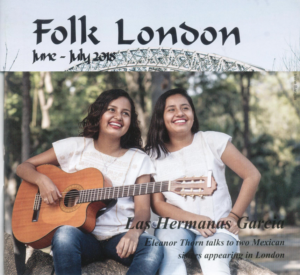Laura and Celia García were 16 and 14 years old when they met two producers from Mexico City who helped to launch their careers on a national and international scale. They had both begun to sing in public aged eight or nine, and were immersed in the old bolero love songs from their region for as long as they could remember. It was this repertoire – classics by the likes of Alvaro Carrillo and Indalecio Ramírez that had travelled the word in the 1950s and 60s and which reflected the poetic spirit and sensuality of a region that is better known for its climate of violence and poverty. Las Hermanas García reflect the personality of the Costa Chica and their success is bringing a welcome optimism to the region.
In early 2016, the two founders of a small Mexican record label, Discos Corason, travelled to the town of Ometepec, Guerrero, on the trail of the legendary bolero composer, Alvaro Carrillo, who was from the same region. What the two producers found was a well-spring of composers and musicians whose style retains the magic of the original costal boleros that fascinated the likes of Frank Sinatra in the 1950s. In this privileged, home-grown world of singers and composers, Las Hermanas García stood out from the crowd. They were recorded by Corasón in August of the same year, made their national debut in Latin America’s most prestigious arts festival in October and launched the CD to a university crowd of over 1,000 people in Mexico City in January 2017. During the past year, this success has been repeated time and again, both on the live stage and in the digital world, where the title track of their first album has registered more than 3.5 million strikes on Spotify. Their second album, ‘Sabor a mar’, is a tribute to costal boleros from all over Latin America, arranged according to the tastes of their native Costa Chica. In 2018, they played at major festivals such as the Cumbre Tajín, at big country fairs like La Feria de San Marcos, Aguascalientes. In June 2018, Las Hermanas García launched their international career with a high profile tour to London and Oxford and during this visit won second place in the Uk’s top Latin music awards (LUKAS) as New International artists of 2018. In 2019, the band has added, to their fame with concerts in the prestigious Fine Arts Palace in Mexico City and in the most elegant theatres and arts centres of cities like Cuernavaca and Pachuca. In April this year, they produced a high profile launch for their CD, ‘Sabor a mar’, in the National Sound Archive and played to large open air audiences in Coyoacán (the artistic hub of Mexico City) and in major parks and festivals. They continue to be invited to play live on the top cultural TV shows, both in their home state and on national television.
The first meeting of Discos Corasón with Las Hermanas Garcia was on the roof of a building in the musicians’ quarter of Ometepec, a town with no recording studios or concert halls, where the three cultures –Amuzgo Indian, Afro Mexican and mestizo– share the same musical repertoire of romantic boleros and upbeat chilena dance music. Laura Garcia had just turned 16 and her sister Celia was 14. Their father, Mariano, a virtuoso requinto guitarist and arranger, had taught them the repertoire that has made him famous in the region and, over the past eight years, the two girls had become part of his band. Following the recording of ‘Que Sepan Todos’ (Discos Corason), Mariano now accompanies and directs his daughters’ band and is enjoying the regional and national success that he had always dreamed of. Their first interview with the national press was filmed by the La Jornada newspaper reporter and this post was viewed by more than one million people. It was a great start to their career!
Mariano García is Amuzgo Indian and the girls’ mother, Eugenia Santiago is a mestizo composer. One of the numbers on the band’s repertoire is a very personal version of the classic Alvaro Carrillo bolero, ‘Sabor a Mí’ a song which had been translated into 26 languages and has been a big hit recently for the Korean by band EXO-K. For the version by Las Hermanas García, Mariano translated the lyrics from Spanish into his native Amuzgo and, for the first time ever, the song is now bilingual – with Laura singing in Spanish and her father in Amuzgo.
This sensitivity, the pride in the local and the feeling for the universal, is what distinguishes Las Hermanas García and has contributed to their enormous early success.
Laura García began to sing professionally when she was nine years old and was joined by her younger sister a year later. A Youtube video shows Laura, a skinny little girl with long plaits, singing a powerful version of ‘Luz de Luna’, the Álvaro Carrillo bolero made famous by Chavela Vargas, amongst other musical icons.
Both Laura and Celia have been immersed in this repertoire all their lives and this gives them a huge advantage over the Mexican pop-star divas who return time and again to the classic boleros because the poetry and the melodies have a depth and beauty hard to find in commercial songs.
Mariano has always asked a lot of his daughters. When they prepare new songs for their repertoire they spend a long time talking about each bolero, about the composer and what he or she was looking for. Laura accompanies on acoustic guitar, Celia sings lead vocals and occasionally plays percussion. Mariano’s arrangements present an exquisite interplay between the first and second voice, which brings new life to a repertoire which continues to be played all over the Americas. Apart from Mariano and the two singers, the fourth member of the band is a young bass player, Cesar Adrian Reyna, also from Ometepec, who comes from a musical family.
When ‘Que Sepan Todos’ was released, journalists and public were surprised by the intensity of the two girls’ performance and their capacity to interpret, in such a personal way, the complexity of love and loss. Very quickly, the national media began labelling them as ‘the new voice of the Mexican bolero’ and invitations flooded in for them to appear on national television. In early December 2017 they were the guests of Mexico’s most famous bolero singer, Armando Manzanero on Channel 22 television, and the month before they had played live with Eliades Ochoa and with the Hungarian gypsy band, Romengo in Mexico City. Eliades fell for their “velvet voices”, and has said he plans to invite them to Cuba.
Although Las Hermanas García have found the way to bring the old repertoire of boleros to a younger audience, their repertoire has always included new songs by local Costa Chica composers. Laura is also beginning to write music for her younger sister’s lyrics and, within a short time they hope to record their own material. In the meantime, they help their mother on a project she has developed to help young girls from the region to find their voice through words and music in a region where the issue of genre violence is a continuing problem.
